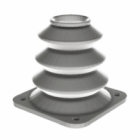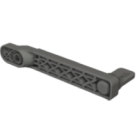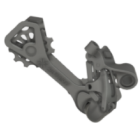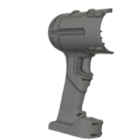3D printing market & capabilities
3D printing is no longer just a tool for rapid prototyping — it’s a core manufacturing strategy across industries. From aerospace to medical devices, additive manufacturing enables faster product development, localized production, and unprecedented design freedom. As the market matures, 3D printing is increasingly used for end-use parts, short-run manufacturing, and mass customization. This section explores how the technology is reshaping global supply chains, empowering engineers and designers, and unlocking new levels of efficiency, sustainability, and innovation.
3D printing is revolutionizing how products are designed and manufactured. It enables fast, flexible, and cost-effective production without the need for molds or tooling, making it ideal for prototyping, customization, and on-demand manufacturing. The technology shortens time-to-market and empowers engineers, designers, and even everyday users to innovate beyond the limits of traditional methods. Industries like aerospace, automotive, and healthcare rely on 3D printing to accelerate development, reduce waste, and create highly specialized parts.
It enables on-demand, localized production, reduces waste, and supports innovations in medicine, aerospace, and sustainability. As the technology evolves, it will reshape how we design, manufacture, and distribute products.
3D printing is a key enabler of Industry 4.0, thanks to its digital-first, decentralized, and customizable nature. It integrates easily with smart factories, IoT, and AI-driven design tools. This leads to faster innovation cycles, reduced waste, and streamlined production.
Yes, 3D printers are legal in almost all parts of the world and are widely used in industry, education, and even at home. However, legality becomes a concern when it comes to what is being printed. Creating regulated items such as firearms, counterfeit goods, or copyrighted designs without permission may violate laws. Users are responsible for ensuring that their printing activities comply with local regulations and intellectual property rights.
Absolutely. Additive manufacturing reduces material waste by using only what’s needed to build a part. It also allows for lightweight part designs that reduce energy consumption in use, and supports recycled or bio-based materials. Sustainability is one of 3D printing’s growing strengths.
Energy use varies by printer type. SLS and resin printers typically consume more power than FDM due to lasers or heating systems, but overall usage is still modest compared to traditional manufacturing.
Yes, particularly for low- to mid-volume production, where tooling costs would otherwise dominate. It also reduces waste, shortens supply chains, and lowers inventory overhead through just-in-time printing. While the upfront equipment cost can be high, the long-term savings are substantial.
Industries like aerospace, automotive, healthcare, and consumer electronics use 3D printing for custom parts, medical devices, and functional prototypes — all with reduced lead times and cost.
Not at all — while thermoplastics are common, today’s 3D printing technologies can also process resins, metals, ceramics, and even composites. Advanced applications use materials like titanium, stainless steel, and carbon fiber-infused nylon for high-performance end-use parts.
Desktop 3D printers are affordable and compact, ideal for hobbyists or small-scale prototyping. Industrial 3D printers offer larger build volumes, tighter tolerances, and higher throughput, making them suitable for production environments. The choice depends on your use case, budget, and material needs.
Millions of 3D printers are sold globally each year, with desktop units making up the majority. The industrial market is smaller but growing steadily, especially in sectors like manufacturing, healthcare, and aerospace.
3D printing accelerates iteration cycles and drastically shortens the time from concept to market. Designers can test functional prototypes within hours instead of weeks, enabling faster feedback and product refinement. This agility gives businesses a significant edge in innovation-driven industries.
Each object in 3D printing can be uniquely tailored without changing the production setup. This makes it perfect for custom-fit items like medical devices, orthotics, or personalized consumer products. Mass customization is a key differentiator of additive manufacturing.
Yes, 3D printing supports local, on-demand production, which minimizes reliance on global supply chains. By printing parts in-house or regionally, companies avoid shipping delays, customs issues, and inventory shortages. It’s a powerful tool for resilient manufacturing.
While not suited for ultra-high-volume runs, 3D printing excels in low-to-medium batches, customization, and complex geometries — often replacing tooling-heavy processes.
3D printing scales well for startups and SMEs looking to grow without large upfront tooling costs. You can start with small batches and ramp up production as demand increases. With modular printer farms and repeatable digital workflows, scalability becomes both flexible and cost-efficient.
Yes, 3D printing complements conventional methods like injection molding and CNC machining. It’s often used for jigs, fixtures, and bridge tooling, or to validate a design before mass production. Hybrid workflows allow companies to optimize both speed and cost.
Medical 3D printing must meet strict standards like ISO 13485 and FDA/CE regulations, especially for implants or surgical guides. Biocompatibility, traceability, and process validation are critical. Partnering with certified materials and platforms ensures compliance and patient safety.
3D printing is evolving from prototyping to full-scale digital manufacturing. With ongoing advances in materials and software, it’s set to redefine localized production and personalized solutions.
Explore also
- 3D printing basics explained
- Choosing the right 3D printing technology
- 3D printing materials guide
- Software & tools for 3D printing
- Costs, time & practical considerations
Related categories
 Austria
Austria  Bosnia and Herzegovina
Bosnia and Herzegovina  Bulgaria
Bulgaria  Croatia
Croatia  Czech Republic
Czech Republic  Denmark
Denmark  Estonia
Estonia  Finland
Finland  France
France  Germany
Germany  Greece
Greece  Hungary
Hungary  Ireland
Ireland  Italy
Italy  Latvia
Latvia  Lithuania
Lithuania  Poland
Poland  Portugal
Portugal  Romania
Romania  Slovakia
Slovakia  Slovenia
Slovenia  Spain
Spain  Sweden
Sweden  Switzerland
Switzerland  United Kingdom
United Kingdom  Ukraine
Ukraine  China
China  Hong Kong
Hong Kong  India
India  Israel
Israel  Japan
Japan  Malaysia
Malaysia  Philippines
Philippines  Saudi Arabia
Saudi Arabia  South Korea
South Korea  Taiwan
Taiwan  Thailand
Thailand  Turkey
Turkey  United Arab Emirates
United Arab Emirates  Egypt
Egypt  South Africa
South Africa  Tunisia
Tunisia  Canada
Canada  Mexico
Mexico  United States
United States  Brasil
Brasil  Colombia
Colombia  Australia
Australia  New Zealand
New Zealand 












